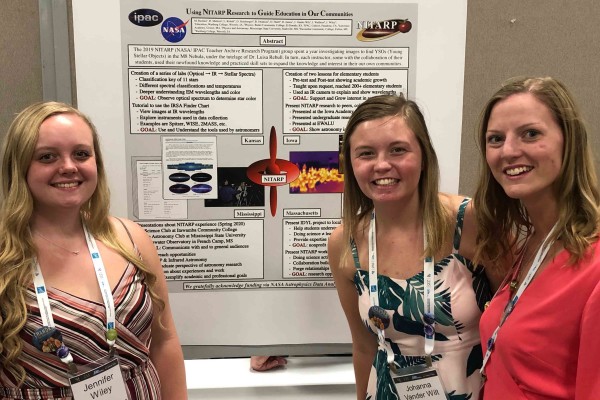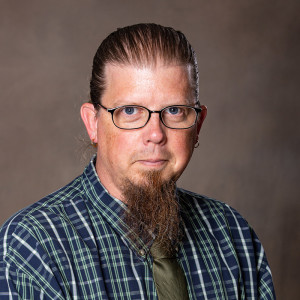Wartburg professor, students present astronomy research in Hawaii
January 29, 2020

By Katie Hirv ’22
A Wartburg College professor and three elementary education students kicked off 2020 in Honolulu at the American Astronomical Society winter meeting, where they presented the results of a year’s worth of work with a NASA researcher.
Professor Michael Bechtel and Jennifer Wiley, Hannah James and Johanna Vander Wilt, all elementary education majors, collaborated with an elite group of teachers and researchers from Massachusetts, Kansas and Mississippi throughout 2019 as part of the NASA/IPAC Teacher Archive Research Program (NITARP). The organization has partnered small groups of educators with a research astronomer for original, authentic research projects for more than a decade.
Luisa Rebull, associate research scientist at the California Institute of Technology and director of the NASA/IPAC program, directed the teams as they performed research to identify Young Stellar Objects (YSOs), or stars in the earliest stages of development, in the Lagoon Nebula (M8).
“Through our research, we were able to identify 185 likely YSOs,” said James, a senior from Rochester, Minn.

Using that research, the Wartburg team created lesson plans that were developmentally appropriate for preschool through eighth grade students in accordance with the Next Generation Science Standards. Before presenting their research and lesson plans in Honolulu, the team showed local students their findings.
“We presented our lessons with pre- and post-tests to more than 100 students from the Denver school district. The lessons linked directly with our NITARP research as it used infrared photometry and stellar formation,” said Bechtel.
The team also used their lesson plans to teach home-school students who have partnered with Wartburg for regular science lessons.
“It was fun because with the homeschoolers, there was kindergarten through sixth grade. It was interesting to take what we were learning as college students and college professors and make it so an 8-year-old could understand. They (the students) think it’s so cool,” said Vander Wilt, a junior from Eldora.
In addition to the AAS meeting, they also presented their research findings at the Iowa Academy of Science Conference and the Hawaiian International Conference of Education.
“It was crazy we even had the opportunity to do this. If you would have told me that I was going to do this three years ago, I would’ve laughed at you,” Vander Wilt said.
With the conference behind them, the team is taking time to reflect on its astronomical experience.
“Even now that it’s been a year since Bechtel asked us to be a part of it, it doesn’t seem like it was real. It’s still very surreal,” said Wiley, a senior from Denver.
Bechtel even said the project took him outside his comfort zone.
“I got a hands-on experience on what astronomy research looks like and have a better understanding of what other disciplines the field can involve,” Bechtel said. “I think my best summative explanation is that I met a lot of great people doing really, really interesting and important projects.”
The team members also expressed their gratitude for the support from Wartburg.
“It was possible through a lot of help from the college. We never would have been able to do this without Wartburg,” said Vander Wilt.
“Undergraduate research, Student Senate, the Wartburg education department … we got a ton of support,” said Bechtel.
As the project concluded, Bechtel shared how the academic discipline instilled in Wartburg students played a role in the success of the team’s research.
“It comes back to how strong Wartburg students are. There is no doubt,” said Bechtel.
